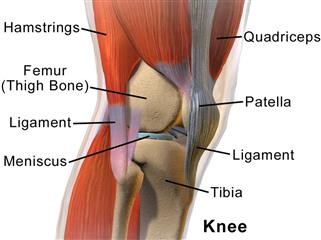The Infertility Website
Severe Vitamin D Deficiency and Infertility
We are the complete source for total info and resources for Severe Vitamin D Deficiency and Infertility on the Internet.
Epidemiology[edit] Prevalence of infertility varies depending on the definition, i.e. on the time span involved in the failure to conceive. Patients with azoospermia or severe oligospermia seeking assisted reproductive techniques should be screened. Surgical ablation: - In minimal or mild endometriosis; surgical ablation or resection of endometriosis plus laparoscopic adhesiolysis improves the chance of pregnancy. - Laparoscopic resection of endometriomas may be beneficial, however recent RCTs suggest intervention only in endometriomas > 4cm. - In moderate or sever endometriosis; surgical treatment should be offered. (Debatable) - Post-operative medical treatment does not improve pregnancy rates. Sperm are then collected, washed, and added to the eggs in the dish. It can also help if a man has severe erectile dysfunction. The final third may be due to a combination of both, other factors, or unknown causes.
The use of surgical humidification therapy, which is the use of heated and humidified CO2 for insufflation, has been shown to reduce this risk.[27] Many patients with existing pulmonary disorders may not tolerate pneumoperitoneum (gas in the abdominal cavity), resulting in a need for conversion to open surgery after the initial attempt at laparoscopic approach. Microscopic Vasectomy Reversal. (PDF, 31 MB) Fertility and Sterility, 1977.
Here are Some More Resources on Severe Vitamin D Deficiency and Infertility

More Info Around Severe Vitamin D Deficiency and Infertility
However, these tests have only poor to moderate predictive value despite widespread use. Around one third of couples have difficulty conceiving due to a low sperm count. Exposure to some chemicals: Some pesticides, herbicides, metals, such as lead, and solvents have been linked to fertility problems in both men and women.
More Details About Klinefelter Syndrome Infertility Treatment
Unexplained fertility affects about 10 percent of couples worldwide. Luteal phase support. (and cryopreservation choice offered if good quality embryos are available) IVF/ICSI 37. Down-regulation: - to avoid premature LH surge and spontenous ovulation. - either GnRH agonist protocol or GnRH antagonist protocol. - always use GnRH antagonist protocol in women with high risk of OHSS. The testes are at risk for both thermal and physical trauma because of their exposed position. Predominantly anovulation is caused by hormonal imbalances such as Polycystic Ovarian Syndrome (PCOS) but ovarian scarring and premature menopause can also result in failure to ovulate. • Tubal disease, comprising anything from mild adhesions to complete blockage of the fallopian tubes, prevents fertilised eggs from travelling from the site of fertilisation to the uterus.
Below are Some More Details on Infertility Treatment Data
Metformin (Glucophage) is another type of medication that may help you ovulate normally if you have insulin resistance or PCOS (polycystic ovarian syndrome). In most cases, surgery can be performed to either reverse these blockage or to retrieve sperm directly from the epididymis and testicles. Ovulatory menstrual periods tend to be regular and predictable in terms of cycle length, duration and heaviness of bleeding, and other symptoms. Unexplained Even after a full fertility work-up, for one in five couples an exact cause of infertility cannot be determined. Intracytoplasmic sperm injection[edit] ICSI technique is used in case of poor semen quality, low sperm count or failed fertilization attempts during prior IVF cycles. Female age of 35 years or older: For unclear reasons, egg numbers decrease at a rapid rate as women age. Practice Committee of American Society for Reproductive Medicine. Medication. If you have ovulation problems, you may be prescribed drugs such as clomiphene citrate (Clomid, Serophene), gonadotropins (such as Gonal-F, Follistim, Humegon and Pregnyl), or letrozole. Practice Committee of the American Society for Reproductive Medicine in collaboration with the Society for Reproductive Endocrinology and Infertility. (2008).
Previous Next
See also
Infertility Problems in Sheep
Infertility Institute & Research Center Reviews
Percentage of Infertility in India